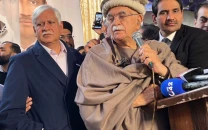New Covid variant hits 39 states across US
Infections are rising in at least 39 states, driven partly by new variants

The United States is facing rapidly spreading of new Covid-19 variant infections across dozens of states.
Cases are most likely increasing in 39 states and aren’t declining anywhere in the US, according to the Centers for Disease Control and Prevention (CDC). Evidence points to an anticipated summer wave of Covid-19. The CDC no longer tracks individual cases but estimates transmission based on emergency department visits. Both Covid deaths and emergency visits have risen in the last week. Hospitalisations climbed 25% from May 2 to June 1.
California appears to be experiencing a notable rise in infections. The state’s data suggests high levels of coronavirus in wastewater, and the prevalence of Covid has increased since May. The positivity rate for Covid tests in California has risen from around 3% to 7.5% in the past month, according to a report published in NBC news.
“It looks like the summer wave is starting to begin,” said Dr. Thomas Russo, chief of infectious diseases at the University at Buffalo Jacobs School of Medicine and Biomedical Sciences.
Historically, Covid infections spike over the summer due to increased travel and indoor gatherings. This year is no exception, although experts expect a milder wave in terms of severe disease.
Several variants are likely contributing to the nationwide trend, said Dr. Dan Barouch, director of the Center for Virology and Vaccine Research at Beth Israel Deaconess Medical Center in Boston.
“We’re seeing the start of an uptick of infections coincident with new variants: KP.2, KP.3, and LB.1. These variants appear to have an advantage over prior ones,” he said.
All three variants are descendants of JN.1, which dominated this winter. KP.2 became the dominant variant in the US last month, followed by KP.3 in early June. KP.1.1, along with these, accounts for around 63% of Covid infections. Scientists refer to these variants collectively as “FLiRT,” due to their amino acid changes.
LB.1 accounts for another 17.5% of Covid infections and is expected to become dominant soon. “It’s sort of the newest kid on the block,” Barouch said.
A preprint paper suggests LB.1 is more infectious than the “FLiRT” variants and may evade protection from vaccines or previous infections.
Read: Gymnast Douglas delays return due to Covid-19
“Assuming that preliminary data is true, that it’s more immune-evasive and infectious than KP.2 and KP.3, that’s a winning formula to infect more people,” Russo said.
The CDC doesn’t regularly track Covid symptoms over time, making it hard to know if illnesses caused by new variants look different. Covid symptoms have been consistent for the last two-plus years.
Other factors could help the virus spread this summer. Cases may continue to rise as people retreat indoors to escape the heat and gather for the Fourth of July.
Also read: Another coronavirus variant rears its head in Pakistan
Russo recommended that vulnerable people consider getting the latest Covid vaccine if they haven’t already. The antiviral medication Paxlovid should also help reduce hospitalisations or deaths.
Most young, healthy people can wait for the updated Covid vaccines expected this autumn. The FDA advised vaccine manufacturers to target the KP.2 variant, though it has already declined in prevalence.
“The virus already appears to be evolving beyond what’s going to be the autumn boosters, and it’s only June,” Barouch said. However, the updated vaccines should still protect against current variants.


















COMMENTS
Comments are moderated and generally will be posted if they are on-topic and not abusive.
For more information, please see our Comments FAQ